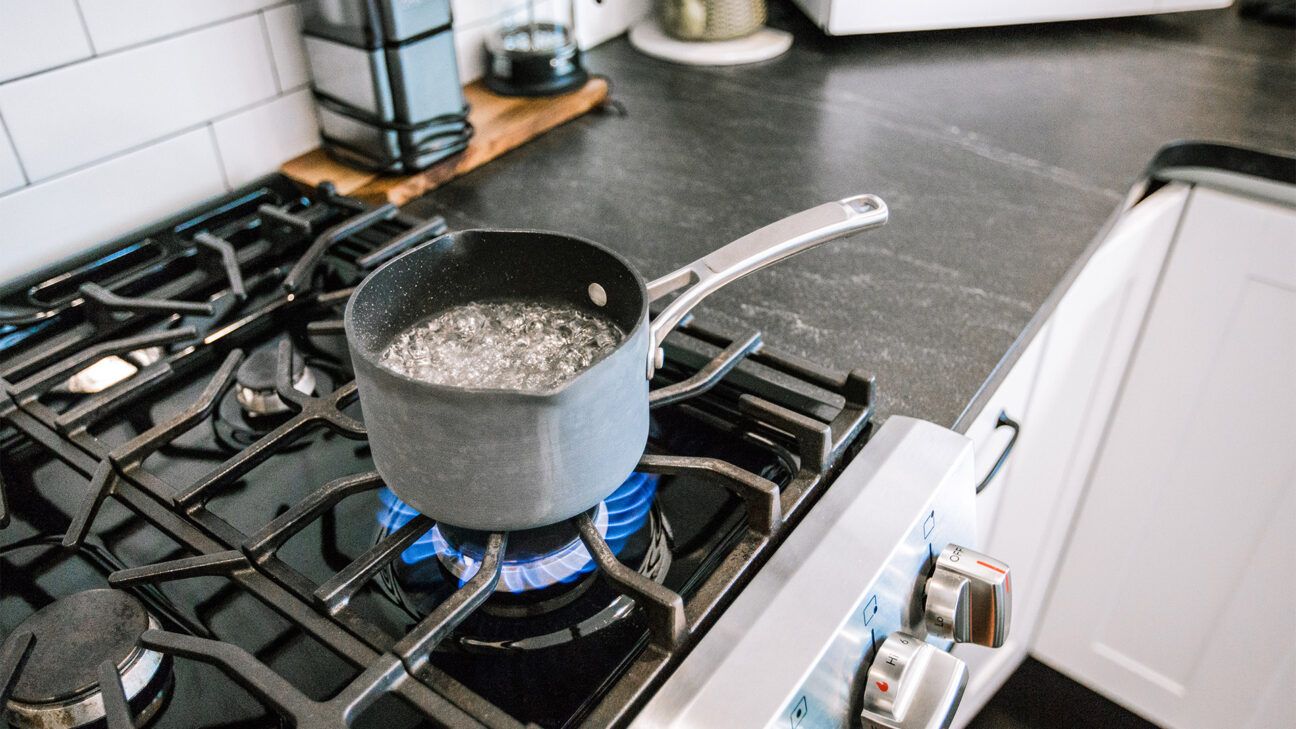
- A new study finds you can reduce the amount of microplastics you drink simply by boiling your water.
- Scientists are just beginning to understand the health risks associated with microplastic exposure.
- Nano- and microplastics are bits of plastic as tiny as one-thousandth of a millimeter in diameter.
Boiling and filtering your tap water may dramatically lower the amount of microplastics you drink, according to new research.
Recent studies have found that nano- and microplastics (NMPs), which are bits of plastic as tiny as one-thousandth of a millimeter in diameter, have been found in a host of products and even in tap water.
A new study, published February 28 in Environmental Science & Technology Letters, found that boiling mineral-rich water for just five minutes can reduce the amount of NMP you’re exposed to by up to 90%.
Scientists are just beginning to understand the health risks associated with microplastic exposure, but growing evidence suggests the plastics can accumulate in the body and trigger oxidative stress, inflammation, insulin resistance, and liver issues.
Certain advanced water filtration systems can capture and help remove some NMPs from tap water. But researchers wanted to figure out other options to remove microplastics, especially since in poorer countries cheaper, more accessible solutions for clean water are needed.
Boiling water may be a safe, simple solution that can effectively decontaminate household tap water, the new findings suggest.
“Boiling water before drinking is a great example of an ancient cultural practice that can help reduce an environmental exposure,” Dr. Luz Claudio, PhD, a professor of environmental medicine and public health at the Icahn School of Medicine at Mount Sinai, told Healthline.
Claudio was not involved in the study.
How boiling water can help remove microplastics
The researchers found simply boiling water is the first step to removing NMPs from tap water.
The researchers collected multiple samples of tap water from Guangzhou, China and contaminated the samples with varying levels of NMPs.
Each sample was boiled for five minutes then left to cool for 10 minutes.
Boiling hard water that’s rich with minerals — such as calcium or magnesium — creates a chalk-like residue known as limescale, or calcium carbonate (CaCO3), which can trap the plastics.
That solid, chalky residue then had to be separated and removed from the water with a standard coffee filter or stainless steel filter, thereby removing NMPs.
The team found that the impact was greatest in harder water: In samples that had 300 milligrams of CaCO3, for example, nearly 90% of NMPs were removed.
In softer water samples with less than 60 mg of CaCO3, roughly 25% of NMPs were removed.
“What’s important to note here is that the effectiveness of trapping these micro/nano plastics in these mineral solids is tied to how hard the water is – the harder the water, the more solids are formed, the more microplastics are trapped,” Dr. Anja Brandon, PhD, the associate director of U.S. plastics policy at Ocean Conservancy and an environmental engineer, told Healthline.
Brandon was not involved in the study.
Why microplastics are found in tap water
Microplastics, such as polystyrene (PS), polyethylene (PE), polypropylene (PP), and polyethylene terephthalate (PET), are commonly found in groundwater and surface water, mostly due to wastewater and surface runoff after rainfall.
According to Claudio, it’s hard to study the health effects of microplastics exposure since there are many types and we are exposed to several potential sources regularly.
Though the health risks are poorly understood, the inhalation and ingestion of microplastics has been shown to impair cell function disruption and trigger inflammation along with oxidative stress.
The most well-documented short-term effects are on the gut microbiome, which can lead to intestinal issues, says Claudio.
Traditional water treatment plants aren’t able to eliminate NMPs from drinking water, and while some water treatment technologies are able to capture and remove tiny plastic bits, these advanced systems do not exist in developing or underdeveloped countries.
According to Brandon, microplastics have been found to contaminate most if not all drinking sources.
The researchers estimated that the intake of NMPs via boiled water is, depending on the region, two to five times less than what’s ingested through regularly drinking tap water.
That said, hard water is often an undesirable quality in tap water and many households have filtration systems that soften mineral-rich water, says Brandon.
More research is needed to inform if and when people should boil their tap water, she added.
How to limit your exposure to microplastics
Anyone who wishes to boil their water should do so in a glass or stainless steel pot.
After boiling the water for about five minutes, let it cool, and do not stir it, Claudio says.
The microplastics need to bind to the calcium and fall to the bottom of the pot so they can filtered or scooped out.
Keep in mind that boiling water is not a magic solution, says Claudio, as we are likely constantly exposed to other sources that contain microplastics.
Brandon recommends avoiding single-use plastic packaging, including bottled water, not using plastic utensils and cooking products, and not putting plastic containers in the dishwasher or microwave.
“All these items can shed plastic particles or leach chemicals with long-term, regular use,” Brandon says.
The bottom line:
Boiling and filtering your tap water may dramatically lower the amount of microplastics you drink, according to new research. Scientists are just beginning to understand the health risks associated with microplastic exposure, but growing evidence suggests the plastics can accumulate in the body and trigger oxidative stress, inflammation, insulin resistance, gut health problems, and liver issues.
